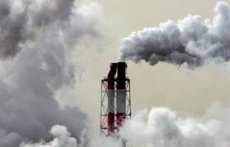By 2020, 3.6 million people will die from air pollution each year
Last reviewed: 23.04.2024

All iLive content is medically reviewed or fact checked to ensure as much factual accuracy as possible.
We have strict sourcing guidelines and only link to reputable media sites, academic research institutions and, whenever possible, medically peer reviewed studies. Note that the numbers in parentheses ([1], [2], etc.) are clickable links to these studies.
If you feel that any of our content is inaccurate, out-of-date, or otherwise questionable, please select it and press Ctrl + Enter.

Hot summer does not add to the happiness of citizens. On such days, air is particularly polluted by automobile exhausts and industrial emissions: it's difficult to breathe, and there is nothing to do. Do you notice?
Andrea Pozzer from the Max Planck Institute for Chemistry (FRG) and her colleagues note that if this situation arises now and then, by 2050 this will become the norm for most of humanity, especially in China (primarily in the east of the country), India ( in its north) and in the Middle East.
By the middle of the century, air quality around the world will be roughly the same as it is today in the urbanization areas of South-East Asia. This conclusion was reached by researchers from the Institute of Chemistry, the Institute of Atmospheric Physics and the Center for Joint Research of the European Commission, using the atmospheric model of EMAC. The specialists took into account the five main air pollutants that negatively affect human health: nitrogen dioxide, sulfur dioxide, ozone, carbon monoxide and particles with a diameter of less than 2.5 microns.
Modeling showed that in East Asia the levels of nitrogen dioxide, sulfur dioxide and particles will increase. And the inhabitants of Northern India and the countries of the Persian Gulf are primarily threatened by the growth of ozone. The reasons are high population density, as well as a predicted growth in industrial production and transport development.
Air pollution in Europe and North America is also exacerbated, but not as much as in Asia, thanks to measures to protect the environment that have been taking place there for several decades.
It is worth noting that air pollution is one of the main modern hazards. Already, according to the World Health Organization, 1.3 million people die of it every year.
If world leaders do not immediately begin to seriously address the problems of air pollution and irrational use of water resources, by 2020 this will kill 3.6 million people a year, and greenhouse gas emissions will increase by 50%.
In just 40 years, 2.3 billion people (about a third of all people now living on the planet) will live in areas that do not have access to adequate water resources.
By 2050, the world's population will grow by about 2.5 billion people from the current 7 billion, while the prospects for climate change, conservation of biological diversity and water resources, as well as the negative impact of environmental pollution on human health, "cause much more fear, than in 2008.
Energy consumption will grow by 80% by 2050, as a result of which the amount of greenhouse gas emissions into the atmosphere will reach such a level that by the end of the century the average temperature of the earth's surface will grow by 3 degrees Celsius.

 [
[